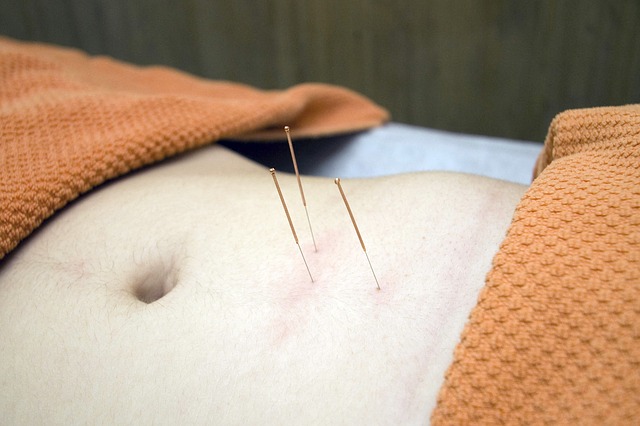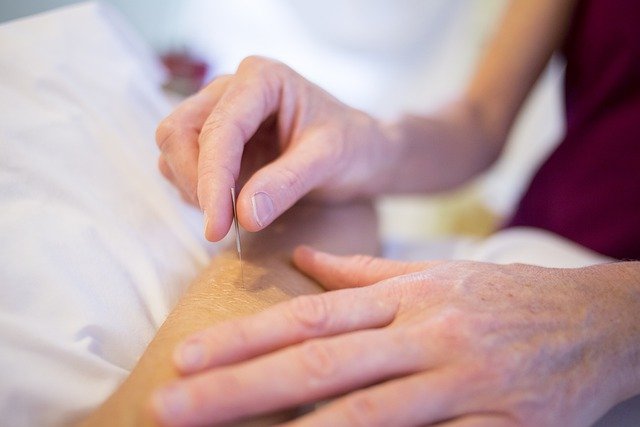The definition given by UNESCO, which has included acupuncture in the “Intangible Heritage of Humanity” in 2010, is very representative of what true traditional acupuncture is:
“Traditional Acupuncture is a therapeutic art which elaborates its diagnostic and therapeutic reasoning on a Taoist energetic vision of Man and the Universe. »
The word acupuncture was invented by the Jesuits in the 16th century when they discovered Chinese medicine, the real name is Zhen Jiu which means the art of metal needles and moxibustion.
There are two important words in the Unesco definition: they are art and Taoist.
Acupuncture is a therapeutic art, which means that even if all traditional acupuncturists are trained on the same base, the way of practicing will be specific to each one.
Taoism, which is a way of life, a path of life as the Taoists themselves say, is the foundation of Traditional Acupuncture. This philosophy is at the very basis of the principles of Traditional Chinese energetics and acupuncture.
The Tao invites us to live in harmony with the world around us. Illness occurs when there is an imbalance between man’s internal energies and the external energies surrounding him, between Inn and Yang. The symptom that characterizes it is the alarm signal that our body sends us when these energies are not in phase.
The role of the Traditional Acupuncturist is to accompany his patients on the path of balance: the path of the golden mean.
To do this, he uses needles to act on the meridians and the corresponding organs, as well as moxa, suction cups, massage, but he will also give you advice on your lifestyle and your diet.
The benefits of acupuncture
Acupuncture to lose weight
Acupuncture does not have a slimming action, it is not adapted to a dysmetabolism. On the other hand, it puts the internal energy back into motion in accordance with the external energies, and stimulates the circulation in the meridians, thus promoting the proper functioning of the organs.

Acupuncture against stress
Very effective on many stress-related emotional problems: anxiety, sleep, worry, sadness… Acupuncture helps to rebalance the emotions and the mind.
Acupuncture to stop smoking
Insofar as the person shows real determination to quit and is ready for withdrawal, acupuncture and especially auriculotherapy is very effective in quitting smoking. (In the case of cigarettes, the acupuncturist’s role will be to determine what is the energy void that caused the person to need to put fire energy into his lungs).
Acupuncture during pregnancy
Few points are necessary to ensure the smooth running of a pregnancy but they are essential.
Acupuncture to counter pain and migraines
It is particularly effective on locomotor problems, tendonitis, arthritis, osteoarthritis, as well as migraines.
Prevention: Traditional Acupuncture is for anyone who wishes to regain the energetic balance they may have lost during illness or traumatic episodes. In no case can it be a substitute for medical treatment.
The principle of acupuncture
The practice of Traditional Acupuncture pursues two fundamental objectives:
to maintain the vital energy (Yuann Qi) in a concern of prevention.
harmonize the ground or energy imbalance that can come from three causes: systemic, emotional or environmental.
Built on these different principles, Traditional Acupuncture differs from the Traditional Chinese Medicine (TCM) practiced today.
The evolution of Chinese medicine has taken place over a very long period of time. First the massage (Tuina), then the pharmacopoeia, the art of living well (food and Qi Gong), and the discovery of the celestial and terrestrial acting forces in Man (Acupuncture). All this was grouped under the term TCM.
After Mao, Acupuncture had lost this aura of communication between Heaven and Earth. All that remained was a certain standardization of treatments, a recourse to point protocols and reasoning based on Chinese herbal medicine.
Traditional Acupuncture has retained its spiritual, symbolic and holistic essence. It is based on a personalized and individualized vision:
Any imbalance, pain, dysfunction is placed in the global framework and life history.
Traditional Acupuncture essentially aims to understand the profound mechanisms at work, which are at the origin of the imbalance of the person.
Every traditional acupuncturist knows that restoring only the internal energetic balance is not enough and that it is essential to reconnect Man to his environment and to the movements of the universe of which he is the receptacle.
Because if there is imbalance and internal blocking of energies, it is because this relationship of Man to what surrounds him (circadian and seasonal cycles, celestial climatic energies, planets…) has been broken at some point.
The Kan Tche theory, the keystone and indispensable tool of ancient and traditional acupuncture, takes into account these movements (the moons, the planets, the eight winds) and allows the integration, in the treatment, of points that are true sensors of these energies.
The acupuncture points chosen during a session are chosen according to what the Chinese call the “root” and the “branches” of the problem, i.e. it is necessary to treat both the background (the life history, the specific terrain of the individual) and the “branches” of the problem, the climatic and emotional environment in which it evolves) and the “shape” (symptoms, appearance), by making a complete traditional energy assessment (vitality or fatigue, physical appearance, skin color and odor, palpation of the belly, appearance of the tongue, radial pulse, etc.).
Traditional Acupuncture therefore appears to be perfectly complementary to Western medicine: one focuses on the individual, his personal history, uniqueness and vitality, the other on the disease and a standardized approach to treating it, valid for the greatest number.

Acupuncture in practice
How does a session at the acupuncturist’s take place?
The first session After several general questions aimed at getting to know the person’s terrain, his energy profile, the reasons for his request and the health problems known to date, comes the time for the energetic diagnosis: “the 8 times” or 8 principles which designate eight categories: Yang Yin – Inner Surface – Empty Plenitude – Cold Heat. An observation of the body (abdomen, tongue, eyes …), as well as the taking of Chinese pulses allows to obtain the energy balance. A first acupuncture session with needles closes this assessment.
The use of needles A needle is placed on an acupuncture point, either to fill the meridian (toning) or by opening the meridian to stimulate the circulation of the Qi (dispersion).
The duration of the pause of the needles varies according to the age of the person, but will always be around 20 to 30 minutes: in winter 30 minutes in toning, 45 minutes in dispersion. 20 minutes in summer for toning, and 30 minutes for dispersion.
The other methods acupuncture points can also be stimulated by pressure (tuina massage, shiatsu), suction cup, heat (moxa moxa powder compacted in combustion or Wei Qi lamp) or even today light (lumino and chromotherapy).
The frequency of the sessions also varies according to age and whether the energy imbalances are chronic or acute: the longer the problem has been present, the more time and space will be needed for the sessions.
Acupuncturist training
Traditional acupuncture is practiced by therapists trained according to ancient texts. Today’s traditional acupuncturists share a common vision of the spirit and practice inherited from ancient Chinese doctors; this lineage reached them through a transmission from master to student relayed by the precursors of Acupuncture in France (Messrs Duron, Borsarello, Chamfrault, Laville Mery, Blard, Lavier, Faubert, Timon).
This can be non-physicians as well as physicians, as long as they practice according to the fundamentals stated above.
History of acupuncture
The practice of acupuncture seems to go back to the most ancient times without us being certain. Chinese archaeologists have found many needles from the Zhou period (-1045 > -245) but this does not prove us their real use.
On the other hand proven medical texts were found for the first time in 1970 in the tomb of Mawangdui (168) where the paths of the acupuncture meridians are clearly represented.
The reference book of traditional acupuncturists is undoubtedly the Huangdi Nei Jing, whose heterogeneous texts were probably compiled between 200 and the first century AD.
The Jesuits sent by Louis XIV were among the first to translate these ancient texts and to allow the West to discover Chinese medicine.
After a few unsuccessful attempts, notably by Louis Berlioz’s father, who was a doctor, France discovered acupuncture in 1927 thanks to the writings of the sinologist Georges Soulié de Morant.
Acupuncture and research, by PasseportSanté
Control nausea and vomiting associated with surgery and chemotherapy treatments. Since 1997, several research groups and expert committees have concluded that acupuncture is effective for these uses compared to placebo treatment.
With respect to post-surgical nausea and vomiting, the results are particularly well established. In 2008, a systematic review of 15 randomized clinical trials, including 1,166 subjects, showed a significant reduction in the risk of nausea, vomiting and the use of anti-vomiting medication following acupuncture treatments. In addition, a greater reduction in post-surgery pain was observed 8 hours and 72 hours after the intervention in the acupuncture group compared to the control group.
Treating migraine. A systematic review, published in 2009 and revised in 2011, evaluated the effectiveness of acupuncture in treating migraine. Twenty-two randomized trials including 4,419 subjects were retained. The researchers concluded that acupuncture was as effective as usual pharmacological treatments, while causing fewer harmful side effects. It also proved to be a useful complement to conventional treatments.
Dental surgery: analgesia and post-operative pain relief. Acupuncture is widely used in dentistry and can be used as a primary or complementary analgesic treatment. Randomized study results on its analgesic effects against post-surgical pain have been positive. A systematic review of 16 controlled trials shows a clear majority of positive results.
Furthermore, according to the results of a systematic synthesis of 14 randomized trials, acupuncture would be effective in treating temporomandibular disorders.
Relieve the pain of lateral epicondylialgia (tennis elbow). Although acupuncture is widely used to relieve the pain associated with various joint disorders, until recently scientific data did not make it possible to rule on its effectiveness in treating epicondylialgia (tennis elbow). However, in 2004, the authors of a systematic review of 6 randomized clinical trials involving a total of 282 patients concluded that acupuncture was effective in relieving pain associated with tennis elbow.
Relieve nausea and vomiting, particularly those associated with pregnancy. The general antiemetic action (against nausea and vomiting) of acupuncture is widely demonstrated. More specifically, a randomized, placebo-controlled clinical trial involving 36 pregnant women showed that it was effective during pregnancy.
Relieve menstrual pain. In 2011, a meta-analysis of 6 clinical trials concluded that acupuncture relieves pain more effectively than placebo, non-steroidal anti-inflammatory drugs (NSAIDs) or Chinese herbs. However, the authors remain cautious in their conclusion and believe that more studies are needed to rule on the effectiveness of this approach. The U.S. National Institutes of Health (NIH) and the World Health Organization (WHO) recognize that there is some evidence that acupuncture is effective in relieving menstrual pain.
The opinion of specialists
Thierry Folliard, practitioner in traditional Chinese medicine: “I don’t like the expression “alternative medicine” which is inappropriate in my opinion, although it is in common use. Traditional Acupuncture must be used with real rigor, because it sets in motion powerful energetic processes, which must be precisely known. The often spectacular results we obtain are there to prove it”.

Eric Moulin, acupuncture practitioner: “Acupuncture, a thousand-year-old therapy, is a formidable ally for those who wish to remain in good health. It is also a very good support in the follow-up of chemotherapies. I share Thierry’s idea about alternative medicine, acupuncture can be anything but gentle. It will be said to be an alternative for those who want to follow the Tao path and take care of themselves if they are in good health, it will be said to be complementary in the case of heavy or chronic treatment”.